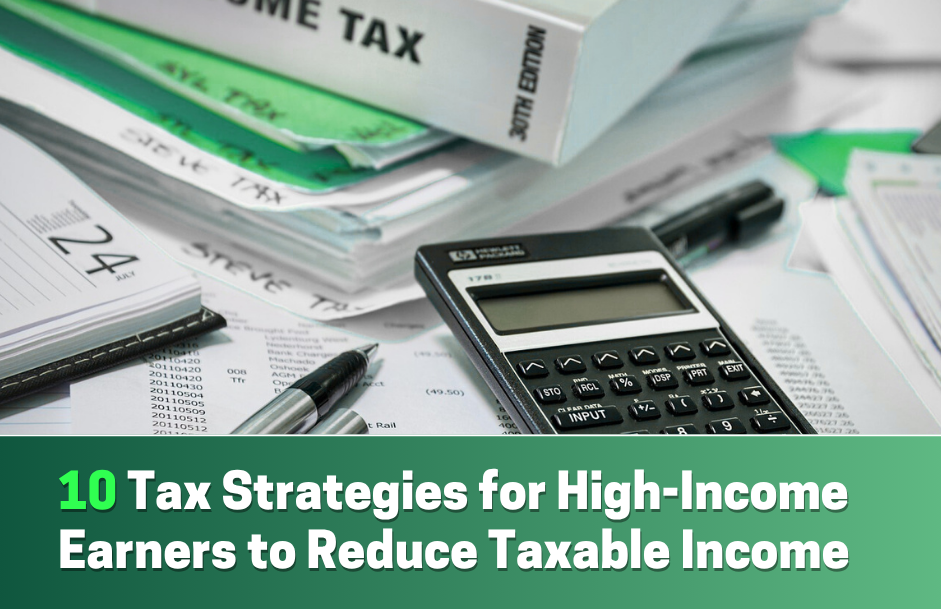
Sometimes surprises can be enjoyable, like a surprise party or finding a $20 bill on the sidewalk. Other surprises, not so much, such as owing a significant amount in taxes that you weren’t expecting, or having your refund delayed considerably. This year has thrown many curve balls not only into our daily lives, but in many individuals’ tax situations as well. Here are some considerations as to why your 2020 tax return may include some unwelcome (or welcome) surprises in 2020.
The bad news first
It’s common practice when there is good news and bad news to start with the unwelcome information first. No one likes owing taxes when they file their return, but due to the complex nature of 2020 your tax situation may be far from “normal.” Here are some reasons why you may end up owing taxes if you didn’t prepare, or weren’t aware, of the tax consequences.
1) Unemployment Income
Losing a job can be a n unsettling situation, especially if you have others relying on you. Even if you do qualify for unemployment insurance, it often doesn’t come close to replacing the lost income. To assist the many who were, and are, unemployed as a result of the pandemic, the Federal government passed the CARES Act which provided a plethora of benefits for workers and businesses alike. One of the major benefits was an additional $600 a week of unemployment benefits on top of what your state provides.
This additional income, although it ceased at the end of July, was a lifeline for those struggling to get by. However, what many do not know, is that unemployment benefits are taxable , and that they may end up owing additional taxes when they file their return.
When you apply for unemployment benefits you usually have the option to have taxes withheld to potentially alleviate this issue when you file the next year. Depending on your tax situation, and how much you’ve had withheld, you may end up needing to pay additional money to the government because not enough tax was sent in during the year.
If you’re collecting, or collected, unemployment insurance this year , it may be prudent to review your tax situation and see if you may be in a position where you’ll owe taxes for 2020.
2) Coronavirus related distributions
Another benefit that came out of the CARES Act was the ability for those who have money tied up in retirement accounts to be able to access those funds more easily. These special distributions allow those who have been impacted by the coronavirus, whether by getting sick or suffered an adverse employment situation, to withdraw funds from certain retirement account plans without some of the negative tax consequences. With these coronavirus related distributions, you’re able to withdraw up to $100,000 through the end of 2020 if you meet the qualifications.
For starters, when you withdraw funds from an IRA or 401k which are considered pre-tax (taxes have not yet been paid on that income), it becomes taxable upon the withdrawal. In addition to that, if you’re under age 59.5, unless you qualify for an exception, there is another 10% penalty tacked on.
As an example, if you are 50 years old and withdrew $10,000 from your IRA and are in the 25% tax bracket, you would owe $3,500 for taxes. This amounts to $2,500 for your normal tax rate, plus another $1,000 for the penalty! Thankfully for those impacted by the coronavirus the 10% penalty does not apply , as it qualifies as an exception.
Another potential tax benefit is that the income from the distribution can be spread out over a 3-year period to even out some of the tax liability over time. Also, the amount withdrawn can be repaid back to the retirement account over the next 3-years undoing the tax consequences from the original withdrawal. But if you do repay the amounts, you’ll need to amend the prior year(s) return in order to claim that income back and reduce the amount in taxes paid.
If you’re someone who did take a coronavirus related distribution in 2020 you may find yourself owing taxes if you didn’t plan for the additional taxes. While the penalty is waived, regular taxes are not. Depending on the size of the distribution, and your tax situation, this can be a significant tax hit, especially if you didn’t have any taxes withheld. As mentioned before, some of this issue can be avoided by spreading out the distribution over the next 3 years, or if you’re in a situation to repay the amount taken by year end. Just be aware that there might be a large tax bill due if no taxes were sent in to cover the money taken.
3) Roth Conversions
A common strategy that many financial planners have employed is to make Roth conversions. What this does is to take money from a pre-tax retirement account (like an IRA) and move it to a Roth. You’re taxed on the amount moved over now, but will not be taxed on it again once it’s inside the Roth. This strategy can have a couple big benefits, especially in volatile year like 2020.
First, if you’re in a sound financial position, and your income is lower, you can fill up the lower tax bracket “buckets” to take advantage of a possible lower tax rate now. Although we don’t know for certain where tax rates will be in the future, if you’re putting money into a Roth at a lower tax-rate, and withdrawing it at a higher rate, you’ve saved money by “pre-paying” the taxes at a lower amount.
Second, if you were able to move funds into a Roth when the stock market was “low”, you will not be taxed on the growth that occurred since the recovery. For instance, if you moved $10,000 worth of stock into a Roth from an IRA you will be taxed at income tax rates on the full $10,000. But, if the investment grows to $15,000, you will not be taxed on the additional $5,000 of growth. While it is impossible to time the markets, and know for certain what the “best” price to convert a position is, keep in mind that any future growth won’t be taxable to you once inside the Roth.
While this can be a good strategy depending on your situation, where you may run into an unwelcome surprise is if you didn’t prepare to pay the taxes during the year. As previously mentioned, the amount converted to the Roth is taxable in the year in which it is completed. If you’re not keeping track of your tax situation you may find yourself owing all the unpaid taxes when you file your return next year. Keeping tabs on your conversions, and paying in estimated taxes when appropriate, can avoid a large tax surprise when you file your return.
Some potential good surprises
So now that the “bad” news is out of the way, we’ll review a couple situations where you might find yourself with a larger refund (or less tax owed) than anticipated. Note that w e have found that when someone’s tax refund is large it often takes longer to be process ed by the IRS. While the refund will come eventually, it can get tied up. This is why we advocate for tracking your tax planning during the year to get as close to break-even as possible. There is still time to do this planning!
4) Returned Required Distributions
Another big change that came from the CARES Act is that is allowed for RMDs to skipped in 2020, but also for those that have already been taken to be returned. Many times , when people take their required distributions, they also withhold taxes to cover the tax due on the withdrawal. The tricky part with returning a required distribution is that you had the option to return the entire amount, which includes the amount already sent to the IRS for taxes. However, this amount does not get credited back to you until you file your 2020 return. This can lead you to have a much larger refund than anticipated.
Some planning strategies that may reduce some of this is by reducing additional taxes paid during the remainder of the year. If you’re someone who normally pays in estimated taxes, make sure to include the amounts already paid in from your required distribution when calculating the amount due each quarter . You may already have paid enough during the year and don’t need to pay more in taxes. If this isn’t an option for you, and it results in a large refund, just be aware that it may take longer for the refund to be processed next year.
5) Stimulus checks
Arguably the most talked about aspect of the CARES Act was the stimulus checks that were sent out. The confusing part about these payments is that they will be based off your 2020 income, but since this is currently unknown, the IRS used either your 2019 or 2018 income tax return (depending on the most recent one they had) to determine eligibility at the time they were sent. If you r income was too high based on your last tax return, then a payment was not sent to you.
For those who file joint, the $2,400 payments began to phase-out (reduce) at income above $150,000, and the $1,200 for a single filer at $75,000. If you have children, you also could receive an additional $500 for each child under age 17.
But what if your income was high in 2019, and ends up being low in 2020? Although you may have missed out on the much needed payments at the time, since the payments will be based on your 2020 income, if you qualify you will receive a tax credit on your return. Tax credits reduce your tax liability dollar for dollar. This reduction in taxes owed can lead to a larger refund, or less tax due, than what you’re used to. This can be a friendly surprise at tax time, but like with the RMD return, if your refund ends up being quite large, it may take some time to be processed.
On another note, if you qualified based on your 2019 income and received a payment, but wouldn’t using your 2020 income , you do not need to pay it back. There are no additional tax considerations for receiving a 2020 stimulus payment when you qualified based on a prior year’s return.
More changes to come?
We’ve gone over a few of the differences you may see on your tax return for 2020. But the year is not quite over yet. Congress continues to work toward agreeing on additional stimulus which we may see before year end. This may add additional wrinkles to the complexity of your tax situation. While we can’t predict the future, we will continue to keep tabs of any changes, and we encourage you to subscribe to our blog, if you haven’t already, for any updates we see with any additional government programs.
Another consideration not discussed here is that many states have offered their own unique programs outside the Federal ones mentioned. Your state return may also look significantly different than it has in year’s past. This is something else to be aware of when you round up your tax information for 2020.
Summary
The 2020 tax year will look like no other in recent memory. With all the government programs and financial planning strategies you may be in for some unwelcome (or welcome) surprises when you file.
Tax planning is one of the most important aspects of a complete financial plan. There are a lot of moving parts, and if you need assistance with your overall planning, we encourage you reach out to our team.



